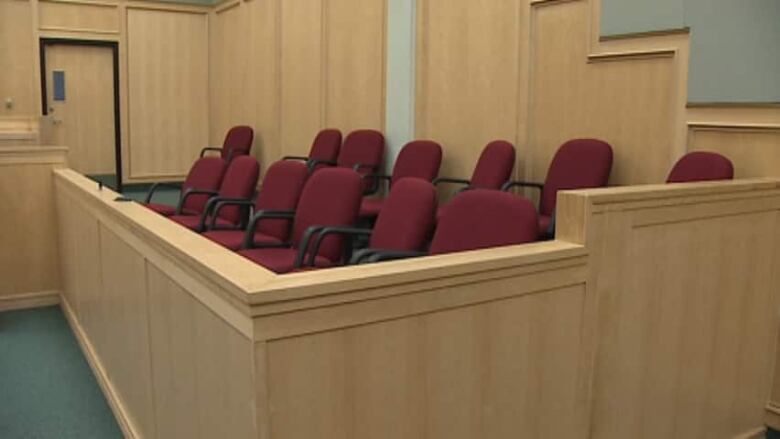Aboriginal youth tackle jury under-representation at conference
Alienation and mistrust linked to lack of participation

In many First Nations communities across Canada, its hard to find a jury of peers for aboriginal legal cases. Some say the under-representation of indigenous people on juries is linked to their over-representationin prisons.
Karla Kakegamic is from the remote fly-in community of Keewaywin First Nation, in northern Ontario. She told The Current hostAnna Maria Tremonti that the fact that many First Nations people up north speak neither English nor French as a first language is just one of the barriers to becoming a jury member.
- First Nations Feathers of Hope forum focuses on justice, juries
- Clifford Kokopenace jury roll case goes to Supreme Court
- Visit CBC Aboriginal for more top stories
Providing access to interpreters is one of the recommendations coming out of a three-day youth conference in Thunder Bay, Ont., called Feathers of Hope. The forum was held at the request of the Ontario Juries Review Implementation Committee. Participants, including Kakegamic, shared their experiences and ideas for improving representation on juries and proposed solutions to address barriers in the judicial system.
The case of CliffordKokopenace, a First Nations man who had his manslaughter conviction overturned owing to inadequate representation of First Nations people on the jury, is currently before the Supreme Court of Canada. The court will examine the broader issue of First Nations representation on juries and what constitutes reasonable efforts by the state to ensure equitable representation. The ruling is expected in early 2015.
There are also more than a dozen coroners inquests that are stalled in Ontario because not enough aboriginal jurors can be found.
Even though Kakegamic took part in the youth conference last week, she said she wouldnt want to sit on a jury if she received a letter tomorrow requesting her to do so.
I wouldnt know how to go about that, said Kakegamic, adding she does not understand the jury or the justice system enough to feel that she would do an adequate job.
Criminal justice classes for the public is another of the recommendations coming out of the conference. These classes should be made available to a wider public and not just be taught in schools, said Kakegamic.
On the ground, in communities, particularly for young people in our communities, there isnt a lot of knowledge about the justice community and its particulars, but what knowledge there is, is primarily negative, said First Nations litigator Katherine Hensel, who was an intervener in the CliffordKokopenace Supreme Court hearing involving aboriginal jury representation.

Thats why the youth conference participants are recommending cultural sensitivity training for police forces, to bridge that gap between aboriginal people and the policemen, said Kakegamic.
Hensel adds that the sense of alienation and lack of participation seems universal across the country, whether on reservesor in urban centres.
But what has to happen in each province to solve the problem of jury representation of aboriginal people, has to be tailored to local circumstances, to local communities and the reasons for lack of representation, said Hensel.
She doesnt believe these issues will be solved in Kakegamics generation or even in the next.
I think it is multigenerational thing, the problems with the system are endemic and are really reflective of the two solitudes in Canada between aboriginal people and non-aboriginal people, said Hensel.
A complete report from the Feathers of Hope conference will be released.
Tune in to The Current Reviewat 8p.m. Nov.24 to hear more.
With files from The Current












_(720p).jpg)


 OFFICIAL HD MUSIC VIDEO.jpg)
.jpg)



























































































